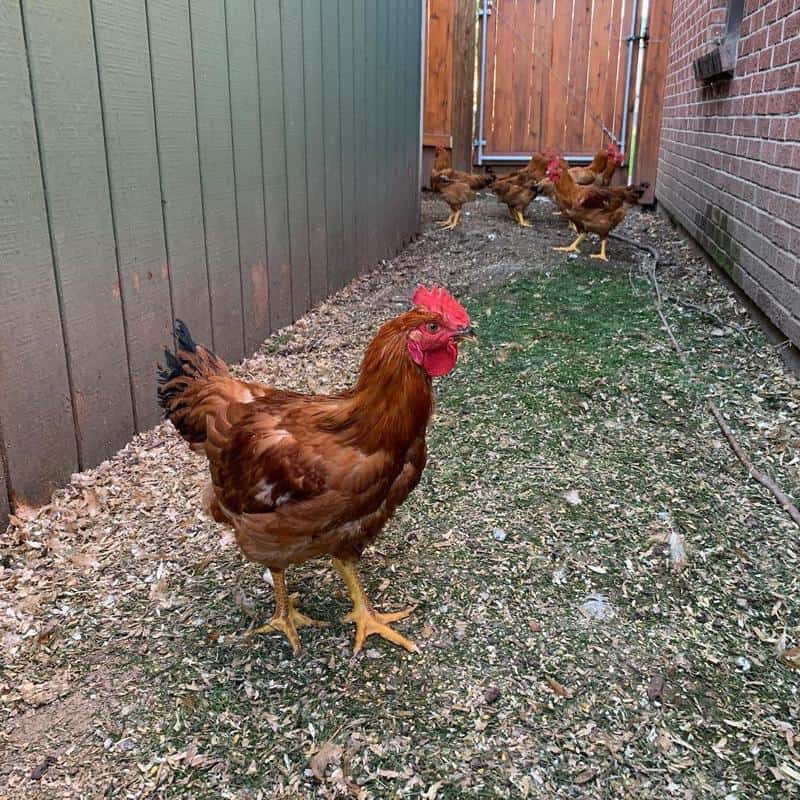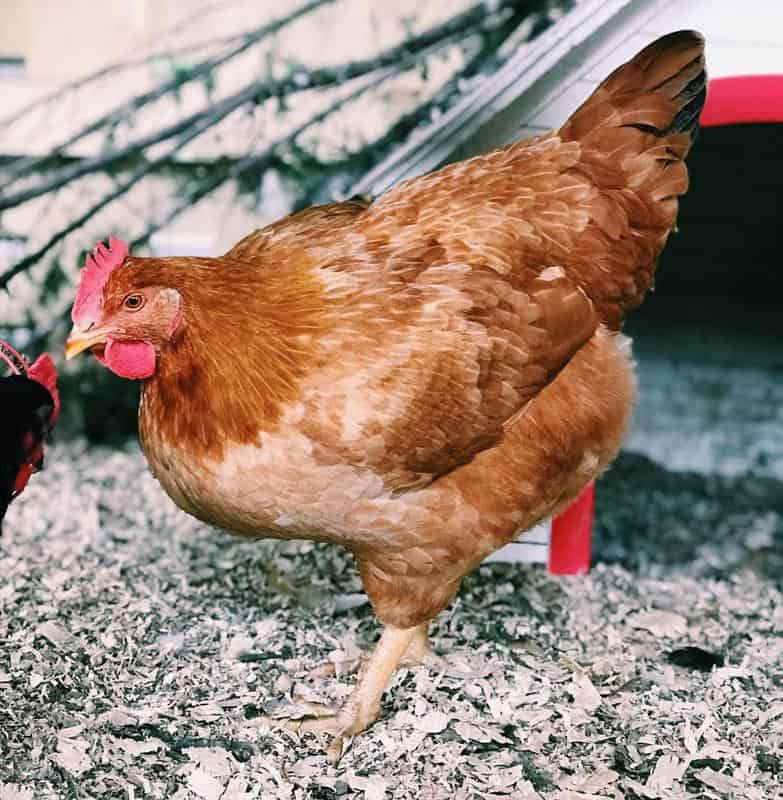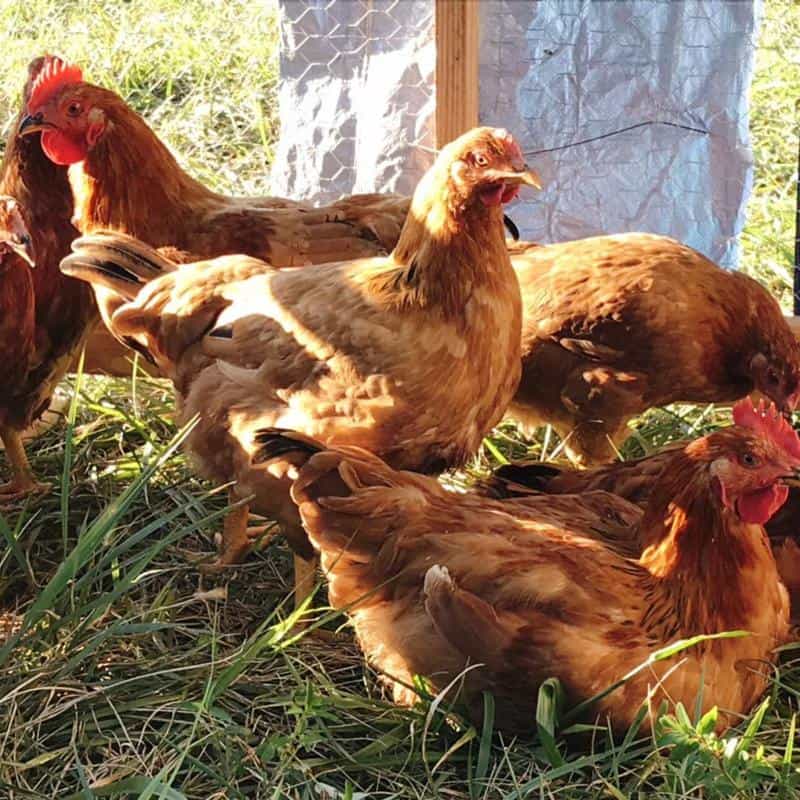If you were looking for chickens ten years ago, you may not have heard about Red Ranger chickens. Yet, today, these chickens seem to be available from every other hatchery.
What exactly is a Red Ranger chicken and where did it suddenly come from? As it turns out, defining this chicken is still a bit of a challenge but it came about to fill a gap that appeared as interest in raising backyard chickens reemerged.

Red Ranger chickens can make the journey into raising backyard chickens much easier for the new farmer. These chickens possess traits that give them an edge compared to both your typical white broilers and heritage chicken breeds.
According to several farmers, raising Red Ranger chickens is not as resource intensive as it is to raise alternatives with similar qualities.
These chickens are still new to the scene and some farmers may be on the fence about them due to their origins. We explore why it might be a great time to get off the fence and start reaping the benefits of raising Red Ranger chickens.
Red Ranger Chickens Quick Facts
| Names | Red Ranger, Red Broiler |
| Origin | USA |
| Purpose | Primarily Meat but hens are good layers too |
| Egg Production/Year | 175 |
| Climate | Cold-Hardy |
| Plumage Color | Reddish Brown |
| Weight | 4 – 5 lbs. |
| Personality | Hens are calm and docile. Some roosters can be aggressive. |
The Origins of Red Ranger Chickens
The history of Red Ranger chickens is quite short and there’s very little information about how they were developed. This is not a surprise considering they are not a true breed but a commercial hybrid.
Red Ranger chickens seem to have been a creation of hatcheries that noted the need for a chicken that could be pasture raised but still had a high growth rate.
There is no information on the breeds that were crossed to produce Red Ranger chickens. This is a common challenge with recently developed chickens whose lineages are kept secret to protect commercial interests.
What can be said about the list of breeds that gave rise to Red Rangers is that it probably contained both good meat chickens and good layers. These qualities are both present in these hybrids.
Physical Characteristics of Red Ranger Chickens

As the name suggests, the plumage of Red Rangers is Red. The actual color is a mix of red and brown that has also been described as honeyed brown.
Because they are supposed to be good foragers, these chickens have strong and muscular legs which are yellow in color. Their breasts are not as developed as that of the Cornish Cross, a hybrid it is frequently compared against.
Unlike the Cornish Cross, Red Rangers are fully feathered which makes them hardier around the farm when the weather changes.
Meat and Egg Production of Red Rangers
Meat
The expectation with many hybrid chickens is that they will either be good for meat or for eggs. The Red Ranger chicken is one of the exceptions because it can serve both purposes quite well.
Many farmers start to rear Red Rangers because they are looking for a meat bird that doesn’t take as long as heritage breeds to mature but also doesn’t grow so fast that it develops health problems and meat that isn’t flavorful.
Red Rangers require at least 11 weeks to reach market weight, but some farmers recommend waiting and harvesting them at 12 – 14 weeks. When slaughtered at this age, these birds will have a weight of between 4 and 5 pounds.
Eggs
Red Rangers are far from the most prolific layers you’ll come across. However, if you decide to keep one for that purpose, you’ll be able to get a few eggs from them every week.
The hens can produce around 3 or 4 eggs every week. On average, they are said to lay around 175 eggs every year.
The hens will require approximately 16 weeks to start laying eggs, but many of these chickens are harvested for meat in the few weeks before they start laying.
Rearing Red Ranger Chickens

Housing and Environment
Red Rangers can stand up better to both hot and cold weather compared to hybrids like the Cornish Cross. This makes housing them a simple affair.
A simple chicken coop to provide shelter at night and protection from predators is a good start.
One of the main appeals of Red Rangers is that they are good foragers. This means they also need plenty of space to roam around scratching the ground for bugs, worms, and whatever else they like to eat.
You can allow your chickens to roam as much as they want, but this has the disadvantage of slowing their growth since they’ll use up a lot of energy while foraging.
A chicken tractor or chicken tractor coop is a good compromise. This is a portable coop that can be moved from one section of your farm to another.
Chicken tractors are made from lightweight materials and allow your chickens to forage but also limit how far your chickens can roam on any given day. Chicken tractors may not offer the best protection against the elements or predators.
Diet
Red Ranger chickens are mainly kept as broilers and, therefore, are fed higher-protein diets to keep them growing at an acceptable rate.
Many farmers take advantage of their foraging instincts to minimize the amount of commercial feed they buy. Poor foragers like Cornish Crosses rely on commercial feed to sustain their higher growth rates.
It has been established that chickens that are pasture raised have meat that is tastier than those raised in confinement. This means there is plenty of incentive to allow Red Rangers to free-range even though this slows their growth.
Temperament
As far as the temperament of Red Rangers goes, it is safer to say that the jury is still out. Some farmers have described these chickens as being docile and friendly while others have singled out the roosters as quite aggressive.
With no information on the lineage of Red Rangers, it is difficult to understand traits such as temperament, especially with many conflicting accounts.
It is possible you’ll end up with some aggressive roosters but it’s also possible you’ll get one that is quite friendly.
Lifespan
Red rangers don’t typically live out their natural lives thus the issue of their lifespan rarely comes up. There are some accounts that put their lifespans at 2 to 6 years if they are not slaughtered.
Although they are hybrids, their growth rate is much slower than that of other hybrids kept for meat. This and qualities like foraging help them avoid the health issues that all but guarantee short lifespans for hybrids like the Cornish Cross.
Breeding Red Ranger Chickens
If you want to raise Red Rangers, your first stop will be a hatchery. These chickens are hybrids which means there is no guarantee the offspring will have the qualities that define a Red Ranger.
In the grand scheme, this means that each time you need to replenish your stock, you’ll have to order eggs or chicks from a hatchery.
Breeds Similar to Red Rangers
Different breeders sought to take advantage of the need for a hybrid chicken that was also good at foraging. This resulted in several hybrids in the market that can be easily confused with Red Rangers.
Some of these hybrids with similar-sounding names are:
- Freedom Ranger
- Dixie Ranger
- Rainbow Ranger
- Gingernut Ranger
- Rudd Ranger
The Freedom Ranger shares many characteristics with the Red Ranger, but its lineage is also a mystery.
Some sources state that some hatcheries changed and trademarked the names of their Red Rangers to set them apart from others.
Also Read:
Red Rangers Vs Heritage Breeds Vs Cornish Crosses
In recent years, more people have resorted to raising their own chickens as an alternative to commercial broilers and layers. The typical options are heritage breeds, free-ranging hybrids, and hybrids that are raised in confinement.
Although heritage breeds have many desirable traits, the realities of raising them are challenging. At some point, the farmer could be faced with problems such as:
- Slow growth rates
- Undesirable traits
- Difficulty in sourcing birds
On the other side of the pendulum, are fast-growing hybrids. These birds will attain market weight in 8 weeks and their feed conversion ratio is better than the alternatives.
However, some farmers are not fond of these chickens because:
- Their extremely high growth rates result in health problems including heart attacks leading to a high mortality rate.
- Cornish Crosses are not foragers and are not very active if allowed to roam.
- The taste of their meat is not as developed as that of heritage chickens or foraging hybrids.
Foraging hybrids like Red Rangers are popular because they strike a good balance between the heritage chickens and hybrids like the Cornish Cross. Factors that you should note are:
- Their growth rate is faster than that of heritage chickens but slower than that of Cornish Crosses. This helps them avoid the health issues of Cornish Crosses.
- As foraging birds, they can be cheaper to feed since they supplement their diet naturally. Foraging also enables them to exercise their bodies.
- Thanks to foraging and a slower growth rate, the taste of their meat is more developed and preferred by many.
Final Thoughts
As a foraging hybrid with a relatively fast growth rate, Red Rangers are an excellent bird especially when raised for meat. Despite their obscure ancestry, they share many desirable qualities seen in heritage chickens.
Red Rangers are decent layers, capable of producing 175 eggs in a year if kept around for that long. Luckily, raising them takes little effort as they are foragers who can supplement the food that you provide and are not predisposed to certain health conditions.
Although you won’t be able to breed your own Red Rangers, these chickens are not in short supply. This makes them good birds to add to your farm today.
